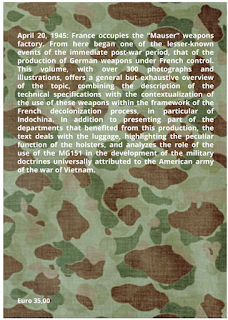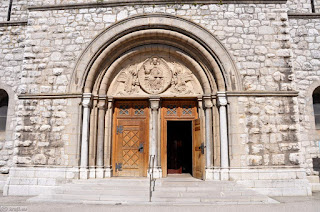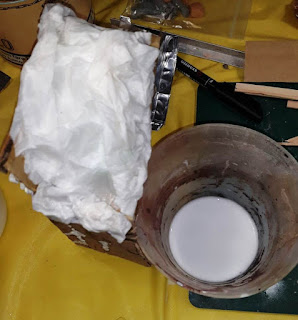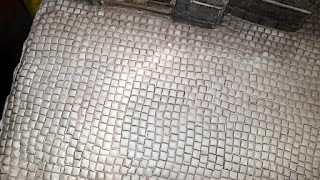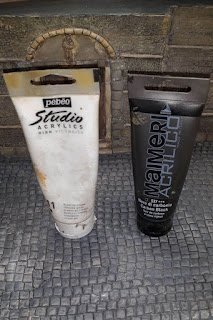LE ARMI DEL FÜHRER AL SERVIZIO DELLA FRANCIA
https://www.youtube.com/watch?v=w9MxmA0NTk4...
Salve vi presento il mio ultimo lavoro con i vari link dove contattarmi, questa volta è autoprodotto. Grazie https://www.facebook.com/profile.php?id=61552625106169
"Hello, I'd like to introduce my latest work, which is self-produced. Thank you for the various contact links: https://www.facebook.com/profile.php?id=61552625106169
- Instagram: Link
- Email: ww2japan@libero.it
- If you're in a hurry, you can find it on eBay:
- In Italian: https://www.ebay.it/itm/335091990323
- In English: https://www.ebay.it/itm/335091929185
Preface – By Ruggero Pettinelli
The literary genre of the late colonial endeavors of the French army in Indochina and Algeria holds a prominent place in contemporary history literature. However, little has been said, especially in an Italian-language book, about the fundamental contribution made in terms of armaments for French and colonial troops, particularly in Southeast Asia. This contribution came from the production conducted under French control by the Mauser factory after the defeat of the Nazi German armed forces. This factory was located in the French-controlled zone of Germany, divided among the victorious powers. France had the opportunity to claim its place among the victors of World War II, but nearly five years of occupation left it in a dire state, in terms of military supplies to pursue its international policy towards territories historically under its influence.Therefore, the weapons produced in the "Frenchified" Mauser factory, and later on the mainland with machinery from the factory, provided a crucial contribution to the reborn military machine of the Republic. The book examines this "rebirth" in great detail, delving into specifics such as models of weapons, operational use of the weapons, and general tactics employed by the French army in colonial warfare. Some of these tactics were adopted, to some extent, by the U.S. army (especially regarding armed riverboats), leading many to mistakenly believe that certain operational concepts were invented by the Americans, which is not the case.The book also provides numerous insights into uniformology, thanks to a substantial contribution of period images, appropriately captioned to highlight equipment peculiarities. This book opens a true window into the mists of time, immersing the reader in another world and era. In many ways, this era has taken on a legendary aura, but in this work, it is analyzed in a precise and "logistic" manner, highlighting how the French experience in Indochina was, first and foremost, a war of scarcity of resources, faced with considerable efforts and some failures."


.jpg)






















